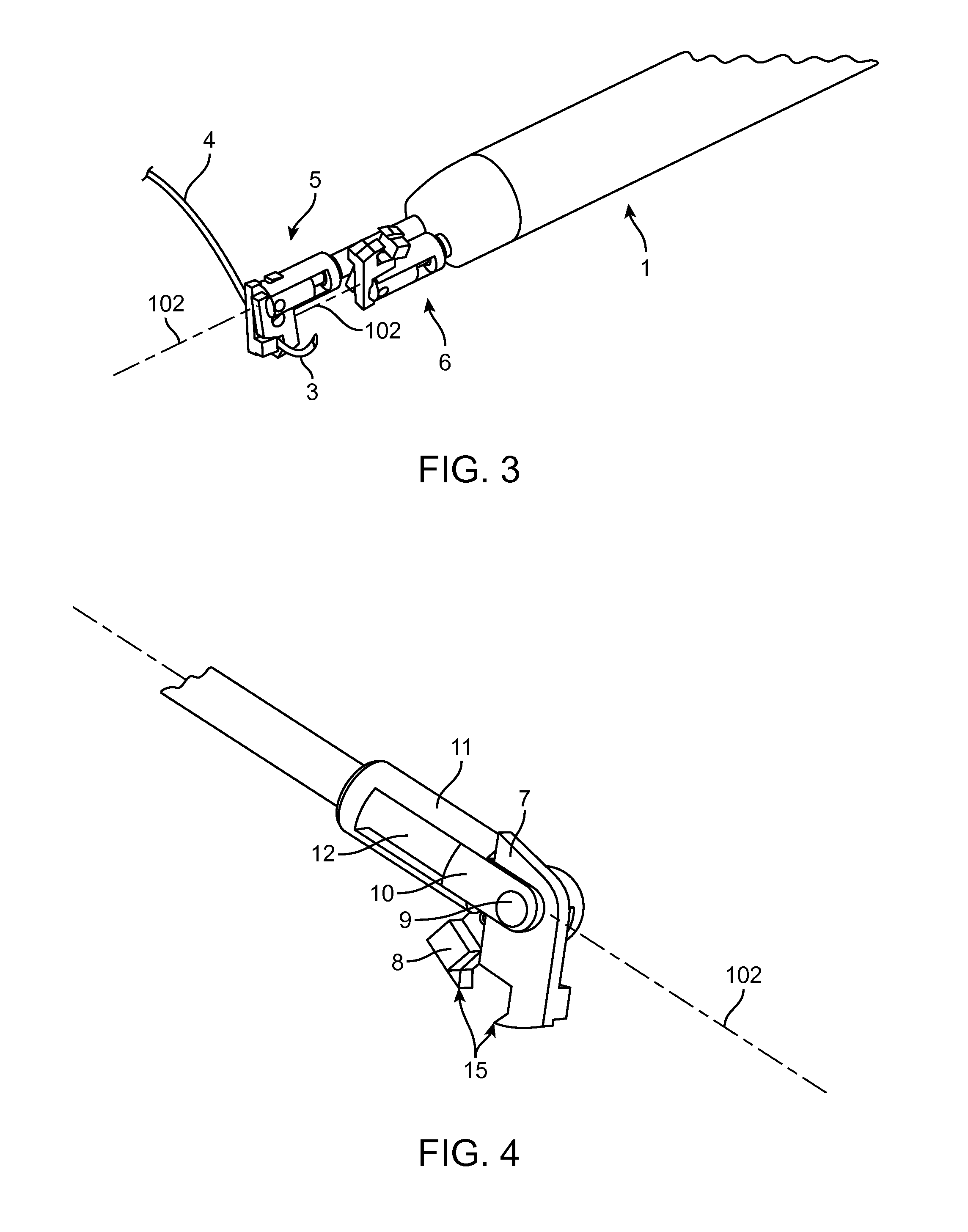Endoscopic Suturing Device, System and Method
a suturing device and endoscopic technology, applied in the field of medical devices, systems and methods, can solve the problems of difficult manipulation of suture needles, large number of suture stitches, and difficulty in placing suture needles, so as to facilitate the passing of clamps, facilitate the placement of suture needles, and facilitate the effect of storing larger needles
- Summary
- Abstract
- Description
- Claims
- Application Information
AI Technical Summary
Benefits of technology
Problems solved by technology
Method used
Image
Examples
Embodiment Construction
[0043]The present invention provides improved medical devices, systems, and methods for the application of surgical sutures. Properly realized, the invention facilitates endoscopic and / or open techniques for suturing tissues, which can significantly increase the speed and enhance the simplicity of suture application, especially in cases when the suturing of a long incision is desired.
[0044]This invention should find extensive use in tissue suturing during surgical operations on both humans and animals. In addition to endoscopic procedures (for example, during laparoscopy), the subject invention can be used during operations that involve limited access and in other surgical areas where tissue joining is desired. It provides particular advantages in the suturing of a large incision by increasing the speed and improving the ease with which stitches are completed, and with which knots are tied. The devices and related techniques described here can be used, for example, to suture differe...
PUM
 Login to View More
Login to View More Abstract
Description
Claims
Application Information
 Login to View More
Login to View More - R&D
- Intellectual Property
- Life Sciences
- Materials
- Tech Scout
- Unparalleled Data Quality
- Higher Quality Content
- 60% Fewer Hallucinations
Browse by: Latest US Patents, China's latest patents, Technical Efficacy Thesaurus, Application Domain, Technology Topic, Popular Technical Reports.
© 2025 PatSnap. All rights reserved.Legal|Privacy policy|Modern Slavery Act Transparency Statement|Sitemap|About US| Contact US: help@patsnap.com



